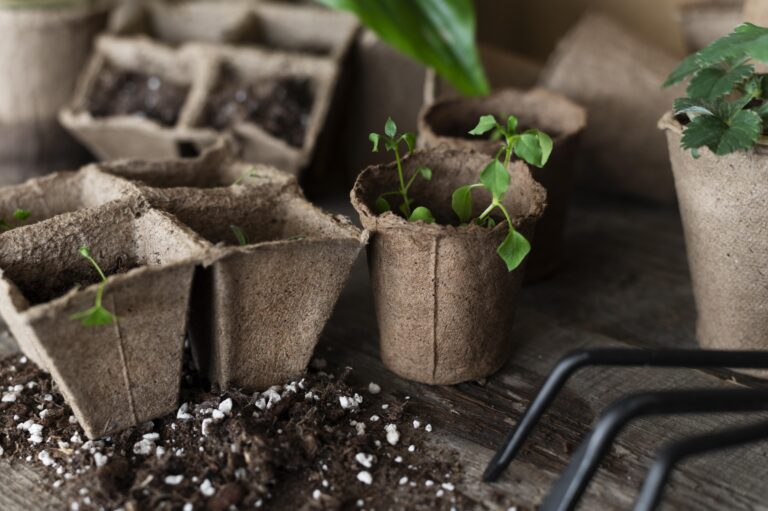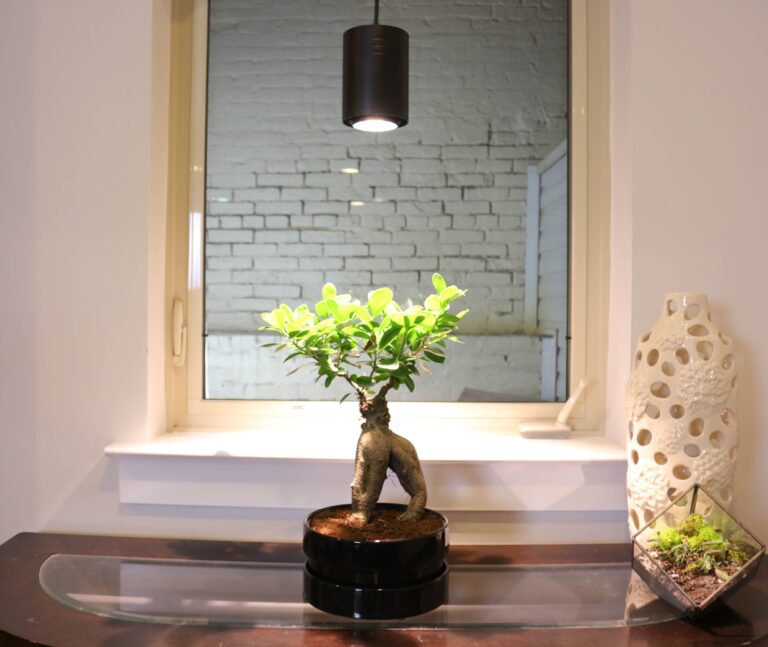Grow Lush Plants with Indoor Garden Lights
Did you know nearly 80% of indoor plants struggle to thrive due to inadequate natural light? This surprising statistic shows how important indoor garden lights are. By picking the right lighting, you can boost growth and make your home a lush oasis. Whether you’re a plant expert or just starting, the best indoor plant lights can help you grow beautiful plants all year.
Understanding Indoor Garden Lights
Indoor garden lights are key for plant growth. They act like sunlight, helping plants grow even without natural light. Knowing about different indoor garden lights helps support photosynthesis and keeps plants healthy.
There are three main types of artificial light for plants:
- LED Lights: These are energy-saving and can be adjusted to fit plant needs. They don’t get hot, so plants can be closer without harm.
- Fluorescent Lights: Great for small plants, they give a wide light spectrum for steady growth. They’re also affordable and simple to set up.
- Incandescent Lights: Though not as efficient, they give off warm light that some plants like. But, they get very hot, so plants must be placed carefully to avoid burning.
Light is crucial for plant growth. Plants use light to make food, which is vital for their growth. Indoor lights replace sunlight when it’s not enough, like in winter or dark places.
| Type of Light | Efficiency | Best Uses |
|---|---|---|
| LED Lights | High | All plants, especially in compact spaces |
| Fluorescent Lights | Moderate | Seedlings and herb gardens |
| Incandescent Lights | Low | Small decorative plants |
Picking the right indoor garden light is important for green plants. Knowing these basics helps any gardener make a thriving indoor garden.
Benefits of Using Indoor Garden Lights
Indoor garden lights bring many benefits for those growing plants indoors. Knowing these advantages can make gardening better and keep plants healthy.
Promoting Plant Growth
Indoor garden lights help plants grow well. They give plants the light they need for photosynthesis. This process turns light into energy for plants.
These lights, made for plants, have the right kind and amount of light. This helps plants grow strong, even in little light. So, indoor gardeners can have healthy plants and beautiful flowers.
Extending the Growing Season
Indoor garden lights also help grow plants longer. They let gardeners control the light, mimicking seasons. This gives plants the right light all year.
This is great for growing many plants, especially in cold winters. Using these lights, gardeners can grow a wide variety of plants. This makes gardening more fun and productive.
Types of Indoor Garden Lights
Choosing the right indoor garden lights is key for healthy plants. LED grow lights and fluorescent lights are popular. Each has its own benefits and fits different plants. Knowing these options helps you choose the best for your garden.
LED Grow Lights
LED grow lights are getting more popular. They are energy-efficient and versatile. They give a wide range of light, good for all plant stages. They use less energy and last longer, saving money.
- Energy Efficiency: Uses less power than other lights.
- Spectrum Options: Full-spectrum for different plants.
- Heat Emission: Little heat, safe for plants.
Fluorescent Lights
Fluorescent lights are a common choice. They are affordable and easy to use. They come in various styles, like tube lights and compact fluorescents. They’re great for seedlings and leafy greens, perfect for beginners.
- Cost-Effective: More affordable than LED grow lights.
- Versatility: Fits different setups.
- Light Spectrum: Good for vegetative growth, not ideal for flowering plants.
Choosing between LED grow lights and fluorescent lights depends on several factors. Consider energy use, cost, and your plants’ needs. Both can help your indoor garden thrive, making your plants healthier and stronger.
Best Indoor Plant Lights for Every Space
Finding the right indoor plant lights can change your indoor gardening. It works for small apartments or big indoor gardens. Here are some top picks for different spaces and plants.
Top-Rated Grow Lights for Small Apartments
Small apartments need lights that save space but still give plants enough light. Look for lights that are small but pack a big punch in terms of light quality.
- Phlizon 600W LED Grow Light – This light is small but gives full-spectrum light. It’s energy-efficient and perfect for small spaces.
- GE Grow Light LED Bulbs – These bulbs fit in standard fixtures. They’re great for adding light to small areas without taking up much space.
- VIVOSUN 600W LED Grow Light – This light is powerful. It gives plants the light they need without using too much space.
Best Fixtures for Large Indoor Gardens
In big spaces, you need lights that cover a lot of area. They should also work with many types of plants.
- Spider Farmer SF-2000 LED Grow Light – This light is efficient and works well in big areas. It’s perfect for serious gardeners.
- Luxrite Fluorescent Grow Light – This light covers a lot of area. It’s also easy to hang, making it great for big gardens.
- Roleadro 1000W LED Grow Light – This light gives full spectrum light and is easy on the wallet. It’s great for big gardens.
These grow lights and fixtures are designed for different spaces. They make sure plants get the care they need.
Choosing the Right Indoor Plant Lighting Fixtures
Finding the perfect indoor lighting for your plants can really help them grow. Choosing indoor plant lighting needs careful thought. This ensures your indoor garden does well.
First, think about the size of your space. For small apartments, LED grow lights or under-shelf lights are great. But, for bigger gardens, you’ll need more powerful lights. Knowing your space’s size helps pick the right light.
Then, look at the styles of lighting. You can choose from modern to traditional designs. Pendant lights and floor lamps are not only stylish but also light up your plants well.
The uses of your lights are also key. For delicate plants, soft light is best. But, bigger plants need more light. So, match your lights to your plants’ needs.
| Fixture Type | Best For | Light Spectrum | Size Recommendation |
|---|---|---|---|
| LED Grow Lights | All indoor plants | Full spectrum | Small to large |
| Fluorescent Tubes | Herbs and ferns | Full spectrum | Small to medium |
| Halogen Bulbs | Tropicals and flowering plants | Warm spectrum | Medium to large |
| Incandescent Lights | Supplemental lighting | Warm spectrum | Small |
In summary, when choosing indoor plant lighting, think about size, style, and use. This will make your indoor garden look great and help your plants thrive.
Grow Light Bulbs: A Detailed Guide
Choosing the right grow light bulbs is key for indoor plants to grow well. Different bulbs impact growth in different ways. Knowing these differences helps gardeners pick the best for their indoor gardens. This guide will cover the types of bulbs and what to look for when buying.
Different Types of Bulbs
There are many grow light bulbs for different needs and places. Here are the main ones:
- Incandescent Bulbs: These bulbs use a lot of energy and get very hot. They’re not the best for growing plants.
- Fluorescent Bulbs: Perfect for starting seeds, fluorescent bulbs give a wide light spectrum. They come in full-spectrum options.
- LED Bulbs: LEDs are very energy-efficient and don’t get hot. They last a long time and come in specific colors for different plants.
Buying Guide for Grow Light Bulbs
This guide helps you choose the right grow light bulbs. Remember these important points:
- Wattage: Find bulbs with enough wattage for your plants. More wattage means brighter light.
- Color Temperature: Choose bulbs with a color temperature of 5000-6500K for growing plants. For flowering, pick bulbs with 2700-3000K.
- Lifespan: Pick bulbs that last longer to save money and time. LEDs usually last the longest.
Understanding the different bulbs and using this guide helps indoor gardeners create the best setup for their plants.
Understanding Indoor Plant Light Spectrum
Indoor gardening needs the right light. The light spectrum is key for photosynthesis, growth, and flowering. Knowing this spectrum helps gardeners choose the best light for their plants at each stage.
What is Light Spectrum?
The light spectrum is a range of wavelengths that light sources emit. We see these as colors. Each color affects plants differently. For example, blue light helps plants grow, while red light is crucial for flowers and fruit.
Importance of Light Spectrum in Plant Growth
Knowing about light is vital for indoor gardening. The right spectrum boosts plant health and yields. Here’s why it matters:
- Photosynthesis Efficiency: Certain wavelengths boost photosynthesis, making plants healthier and grow faster.
- Growth Stimulation: Colors like blue and red trigger different growth responses. Blue is for leaves, and red is for flowers.
- Seasonal Adaptation: Plants adjust to light changes, mimicking seasons to improve flowering or fruiting.
For the best growth, choose lighting that matches your plants’ needs. This ensures your indoor garden thrives with strong yields.
| Wavelength (nm) | Color | Effect on Plants |
|---|---|---|
| 400-500 | Blue | Promotes vegetative growth and strong stems |
| 600-700 | Red | Stimulates flowering and fruiting |
| 500-600 | Green | Less effective for photosynthesis, but essential for overall plant balance |
| 700-800 | Far Red | Influences flowering and elongation of stems |
Energy-Efficient Plant Lights: Sustainable Choices
In today’s world, picking energy-efficient plant lights is key to green gardening. These lights help plants grow well and are good for the planet. They save money on electricity and cut down on pollution.
Why Energy Efficiency Matters
Energy efficiency is crucial for green indoor gardening. It saves money and helps the planet. Using efficient grow lights cuts down on energy use and pollution. This helps our planet stay healthy.
Top Energy-Efficient Grow Lights on Amazon
Looking for good lighting for your plants? Here are some top picks on Amazon:
| Product Name | Type | Wattage | Key Features | Price |
|---|---|---|---|---|
| VIPARSPECTRA 300W | LED | 136W | Covers 2x2ft, Full Spectrum | $49.99 |
| GE Grow Light LED | LED | 12W | Energy Star Certified, Low Heat | $22.99 |
| VIVOSUN T5 Fixture | Fluorescent | 54W | High Output, Adjustable Width | $39.99 |
| SANSI 15W A19 LED | LED | 15W | 360-Degree Light, 100W Equivalent | $19.99 |
| iPower 1000W HPS | HPS | 1000W | High Efficiency, Balanced Spectrum | $139.99 |
Choosing the right energy-efficient plant lights is important. It helps your plants grow well and protects the environment. By making sustainable choices, you support a greener future.
Comparing Grow Light Products
When you’re looking into indoor gardening, knowing about different features and prices is key. It helps you make smart choices. By comparing grow light products, you can save time and ensure your plants get the best care.
Features to Consider
When picking grow lights, look at these important features:
- Light Intensity: Plants need different amounts of light. Choose lights that let you adjust the intensity.
- Spectrum Control: Being able to change the light spectrum is crucial. Look for lights that offer full-spectrum options.
- Adjustable Settings: Some lights let you change height and duration. This flexibility helps plants grow better.
- Energy Efficiency: LED grow lights are energy-saving and good for plant health.
Price Ranges and Product Comparisons
Price is a big deal when comparing grow lights. Here’s a table that shows different options, their features, and prices:
| Product Name | Light Type | Features | Price Range |
|---|---|---|---|
| VIPARSPECTRA 300W | LED | Full-spectrum, adjustable height | $50 – $70 |
| GE Grow Light Bulb | LED | Simple setup, energy-saving | $15 – $25 |
| Hydrofarm FLT48 | Fluorescent | Low heat, good for seedlings | $30 – $50 |
| KingLED 1200W | LED | High-intensity, full-spectrum light | $90 – $120 |
Knowing these features and price ranges helps you compare grow lights better. It makes choosing the right one for your indoor garden easier.
How to Set Up Your Indoor Garden Lights
Setting up indoor garden lights is key for your plants to thrive. A good grow lights setup boosts growth and meets your plants’ light needs. Follow these steps to create the best environment for your plants.
- Choose the Right Location: Find a spot with little natural light and close to power outlets.
- Select Suitable Lights: Pick LED, fluorescent, or other grow lights based on your plants’ needs.
- Position the Lights: Put the lights 12 to 24 inches above your plants. Move them up as plants grow to keep the right distance.
- Ensure Proper Coverage: Make sure the lights cover all growing areas evenly to prevent dark spots.
- Setup a Timer: Use a timer for 14 to 16 hours of light a day, like natural sunlight.
- Monitor Temperature: Check the temperature to avoid overheating. Keep it between 70°F and 80°F.
By following these steps, your plants will grow better and stay healthy. Adjust as needed for the best results.
Adjusting Light Height and Duration
To help indoor plants grow well, adjusting light height and controlling grow lights duration are key. Lighting needs change as plants grow, so adjusting height is important. Keeping grow lights at the right distance prevents light burn and ensures enough light.
Most indoor plants do best with 12 to 16 hours of light each day. Adjusting the time plants get light helps them grow healthy. Using a timer can help keep the light cycle steady and prevent too much light.
Watching your plants closely is important. Adjusting light height and duration helps them stay healthy. By regularly checking your plants, you can make the right changes. With care, your indoor garden will thrive.
Maintaining Your Indoor Garden Lighting System
Keeping your garden lights in good shape is key for your indoor plants. Regular care helps your lights last longer and work better.
Here are some important tips for keeping your lights in top shape:
- Clean the Lights: Dust and dirt can cut down on light efficiency. Use a soft cloth or duster to clean bulbs and reflectors often.
- Inspect Bulbs: Often check your bulbs for damage or burnout. Replace any that are not working right. Good grow light bulbs help your plants and save energy.
- Check Electrical Connections: Bad connections can cause problems. Make sure all wiring is good and securely connected.
- Adjust Height and Angles: Check your lights’ height and angle as plants grow. You might need to adjust them to keep the light right.
- Monitor Power Consumption: Watch how much energy your system uses. If it goes up too much, you might need to check it.
To see when to do these tasks, look at this table:
| Maintenance Task | Frequency |
|---|---|
| Clean Lights | Monthly |
| Inspect and Replace Bulbs | Every 3 Months |
| Check Connections | Monthly |
| Adjust Heights and Angles | Every 2 Weeks |
| Monitor Power Consumption | Weekly |
By following these steps, your indoor garden lights will work well. This helps your plants grow strong. Taking care of your lights makes your indoor garden a great place to be.
Common Mistakes to Avoid with Grow Lights
Indoor gardening is very rewarding, but it’s key to avoid mistakes with grow lights. One big mistake is putting lights too close or too far. This can cause plants to get too little light or get burned.
Another common error is giving plants too much light. Plants can get stressed if they get too much light each day. It’s better to follow the light needs of your plants. This helps keep them healthy and strong.
Not considering the light spectrum needs of plants is also a mistake. Different plants need different light spectrums at different growth stages. For example, seedlings need blue light, while flowering plants need red light. Knowing and adjusting the light spectrum can help your plants grow better.
FAQ
What are indoor garden lights and how do they work?
What is the best type of indoor plant lights for my home?
How can indoor garden lights benefit my plants?
How do I choose the right indoor plant lighting fixtures?
What should I know about the indoor plant light spectrum?
Are there energy-efficient plant lights available?
How do I maintain my indoor garden lighting system?
What are common mistakes to avoid when using grow lights?

Suyash Dhoot, editor at SouthElMonteHydroponics.com, is a pioneering force in hydroponics. His expertise spans nutrient solutions and cutting-edge technology. Through meticulous editing, he elevates the site to a beacon of knowledge, offering invaluable insights. Dhoot’s dedication shapes a greener, more efficient future for agriculture.



